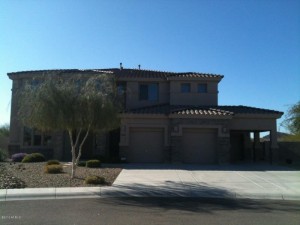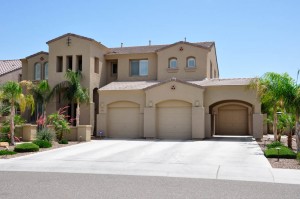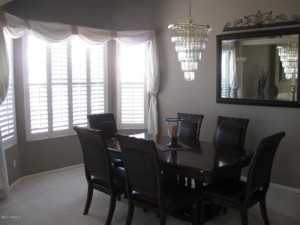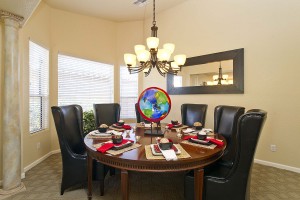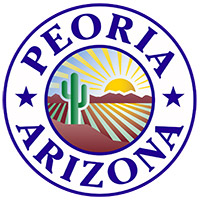
Looking to buy a home in Phoenix? Browse the most up to date listings for all homes for sale in Phoenix. This home search is updated daily for the most current information.
Phoenix, AZ is the 12th largest metropolitain area by population in the United States, with more than 4.3 million people as of 2009. Phoenix has maintained a growth streak in recent years, growing by 24.2% since 2000, making it the second-fastest-growing urban area in the US. In 2008, Phoenix was one of the hardest hit by the subprime mortgage crisis and today the median home price is about $150,000 – down from the $262,000 peak in 2006. Downtown Phoenix has experienced renewed interest and growth, resulting in numerous restaurant, stores and businesses opening or relocating to central Phoenix. As with most of Arizona, Phoenix does not observe daylight saving time. The military has a significant presence in Phoenix with Luke Air Force Base located in the western suburbs.
Phoenix has a subtropical arid climate, with very hot summers and warm winters. The average summer high temperature is among the hottest of any populated area in the US and approaches those of cities in the Middle East. The temperature reaches or exceeds 100°F (38°C) an average of 110 days during the year, including most days from May through September and highs can top 110 °F (43 °C). Rainfall is sparse during a large part of the summer, but during monsoon season which runs June 15 to September 15, it raises humidity levels and can cause heavy localized precipitation and flooding occasionally. Winter months are warm, with daily high temperatures ranging from the mid-60’s to low 70’s (18-22°C) and overnight low temperatures rarely dipping below 40 °F (4 °C).
Phoenix and the surrounding metro area have several cultural activities, including the performing arts, museums and events.
- One such venue is the Phoenix Symphony Hall, where performances from groups such as the Phoenix Symphony Orchestra, Arizona Opera and Ballet Arizona often occur. Another venue is the Orpheum Theatre, which is home to the Phoenix Metropolitan Opera. Concerts also regularly make stops in the area.
- Phoenix Art Museum is the Southwest’s largest destination for visual art from across the world. Another prominent area museum is the Heard Museum just north of downtown. Other notable museums in the city include the Arizona Science Center, Hall of Flame Firefighting Museum, Phoenix Museum of History, Phoenix Zoo and Children’s Museum of Phoenix.
- Phoenix has long been renowned for authentic Mexican food, thanks to both the large Hispanic population and proximity to Mexico. But the recent population boom has brought people from all over the nation, and to a lesser extent from other countries, and has since influenced the local cuisine.
Phoenix is home to several professional sports franchises, including representatives of all four major professional sports leagues in the U.S.
- The first major franchise was the Phoenix Suns of the National Basketball Association (NBA), which started play in 1968.
- The Arizona Cardinals moved to Phoenix from St. Louis, Missouri in 1988 and currently play in the Western Division of the NFL’s National Football Conference.
- The Phoenix Coyotes of the National Hockey League moved to the area in 1996; they were formerly the Winnipeg Jets franchise.
- The Arizona Diamondbacks of Major League Baseball (National League West Division) began play as an expansion team in 1998.
- The Phoenix International Raceway is a major venue for two NASCAR auto racing events per season. Boat racing, drag racing, and road course racing are also held at Firebird International Raceway.
Public education in the Phoenix area is provided by over 30 school districts and the Phoenix Union High School District operates most of the public high schools in the city of Phoenix. Arizona State University is the main institution of higher education in the region, with campuses located in Tempe, Northwest Phoenix, Downtown Phoenix and Mesa. There are also small satellite offices for the University of Arizona (based in Tucson) and Northern Arizona University (based in Flagstaff) located in Phoenix.
Phoenix is served by Sky Harbor International Airport, which is centrally located in the metro area near several major freeway interchanges east of downtown Phoenix. Sky Harbor is the 9th busiest airport in the US and 17th in the world for passenger traffic, handling more than 42 million travelers in 2007. The airport serves more than 100 cities with non-stop flights.
For more information about Phoenix, AZ please visit Wikipedia.
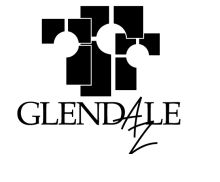
 The following photography tips are primarily geared for an SLR (single lens reflective) camera, though most of these settings can also be controlled with compact cameras. If you are curious about an SLR camera, you can find a good entry-level one for about $500, including the lens. It is best to refer to your owner’s manual to see how to adjust these settings, which will likely change with every environment. Trial and error is the best way to learn what looks good and how to remember to change the settings.
The following photography tips are primarily geared for an SLR (single lens reflective) camera, though most of these settings can also be controlled with compact cameras. If you are curious about an SLR camera, you can find a good entry-level one for about $500, including the lens. It is best to refer to your owner’s manual to see how to adjust these settings, which will likely change with every environment. Trial and error is the best way to learn what looks good and how to remember to change the settings.